Inside the Tray: How Maintenance Protects Patients, the Planet, and Drives Progress
By Clinical Instrument Repair Consultants (CIRC) | July 23, 2025
In modern surgical environments, precision instrumentation is foundational to patient safety, clinical efficiency, and cost containment. Despite the centrality of surgical tools to procedural success, the repair and maintenance of reusable medical instruments often remain underprioritized in systems-level policy and clinical planning. Recent scholarship reveals that structured maintenance and repair not only extend the functional life of tools but also significantly reduce environmental impact and healthcare costs (Agency for Healthcare Research and Quality [AHRQ], 2024).
Instrument Reliability and Clinical Efficiency
An international proof-of-concept study published in Scientific Reports evaluated the implementation of a Surgical Instruments Information Management System (SIIMS) in a sports medicine context. Results showed a marked improvement in operational efficiency: repair frequency decreased from 7.7 to 2.9 incidents per 1,000 operations; scrap rate dropped from 5.1 to 2.3 per 1,000 operations; and instrument utilization increased from 74% to 88.2% (Tang et al., 2024). These outcomes were attributed to real-time tracking of tool conditions and timely servicing, which reduced operating room delays and enhanced the reliability of surgical trays. Parallel studies using computer vision techniques to identify instruments in neurosurgical operating rooms further support the role of automation and technology in improving tray management and maintenance scheduling (Zachem et al., 2023).
Environmental and Economic Impacts of Repair Over Replacement
From a sustainability standpoint, a landmark life cycle assessment (LCA) compared the impact of repairing versus replacing surgical scissors. Findings demonstrated that repair reduced carbon emissions by over 95% and decreased life cycle costs by half, suggesting that high-frequency repairs could materially improve the sustainability profiles of surgical departments without compromising function (Rizan et al., 2022). This aligns with the conclusions of AHRQ (2024), which emphasized the use of LCAs to reduce healthcare’s carbon footprint and manage emissions tied to medical device manufacturing and waste.
Workforce Training and Systems-Level Impact
Maintenance efficacy also depends on the expertise of the personnel tasked with inspection and repair. A study conducted through the Surgical Instruments Repair Technicians (SIRT) program in Nigeria revealed that technician training dramatically improved repair quality and reduced the number of failed or misaligned instruments returned to circulation (Frontiers in Public Health, 2025). The SIRT model illustrates the importance of technician education in ensuring that maintenance efforts meet global safety standards.
Implications for Policy and Practice
In combination, these studies support several best-practice recommendations:
Routine maintenance scheduling and documentation should be embedded in surgical workflows.
Lifecycle tracking systems (e.g., RFID, SIIMS, or computer vision–based platforms) should be deployed to support traceability and ensure timely interventions (Zachem et al., 2023).
Repair-first policies should be adopted wherever clinically appropriate to reduce procurement costs and minimize waste (Rizan et al., 2022; AHRQ, 2024).
Technical training for repair professionals must be recognized as essential to patient safety, especially in resource-limited settings (Frontiers in Public Health, 2025).
Final Analysis
Evidence from current literature affirms that proactive, data-driven surgical instrument maintenance not only enhances patient outcomes and reduces perioperative delays but also substantially mitigates environmental impacts. As healthcare systems increasingly emphasize sustainability, equity, and operational resilience, surgical instrument repair emerges as a high-impact, underutilized strategy that aligns with both clinical and global goals.
References
Agency for Healthcare Research and Quality. (2024). Use of life cycle assessment in the healthcare industry (Technical Brief No. 48). https://effectivehealthcare.ahrq.gov/sites/default/files/related_files/lifecycle-assessment-tech-brief.pdf
Frontiers in Public Health. (2025). Enhancing surgical safety through surgical instruments repair technicians’ training: Recent experience from Nigeria. https://www.frontiersin.org/articles/10.3389/fpubh.2025.1522315/full
Rizan, C., Brophy, T., Lillywhite, R., Reed, M., & Bhutta, M. F. (2022). Life cycle assessment and life cycle cost of repairing surgical scissors. The International Journal of Life Cycle Assessment, 27(6), 780–795. https://doi.org/10.1007/s11367-022-02064-7
Tang, J., Zhuang, M., Lin, P., Wang, Z., & Zhao, J. (2024). Application study of surgical instruments information management system in sports medicine specialty. Scientific Reports, 14, 6167. https://doi.org/10.1038/s41598-024-56809-5
Zachem, T. J., Chen, S. F., Venkatraman, V., Ellens, D. J., & Warnke, P. C. (2023). Computer vision for increased operative efficiency via identification of instruments in the neurosurgical operating room: A proof-of-concept study. arXiv Preprint. https://arxiv.org/abs/2312.03001

